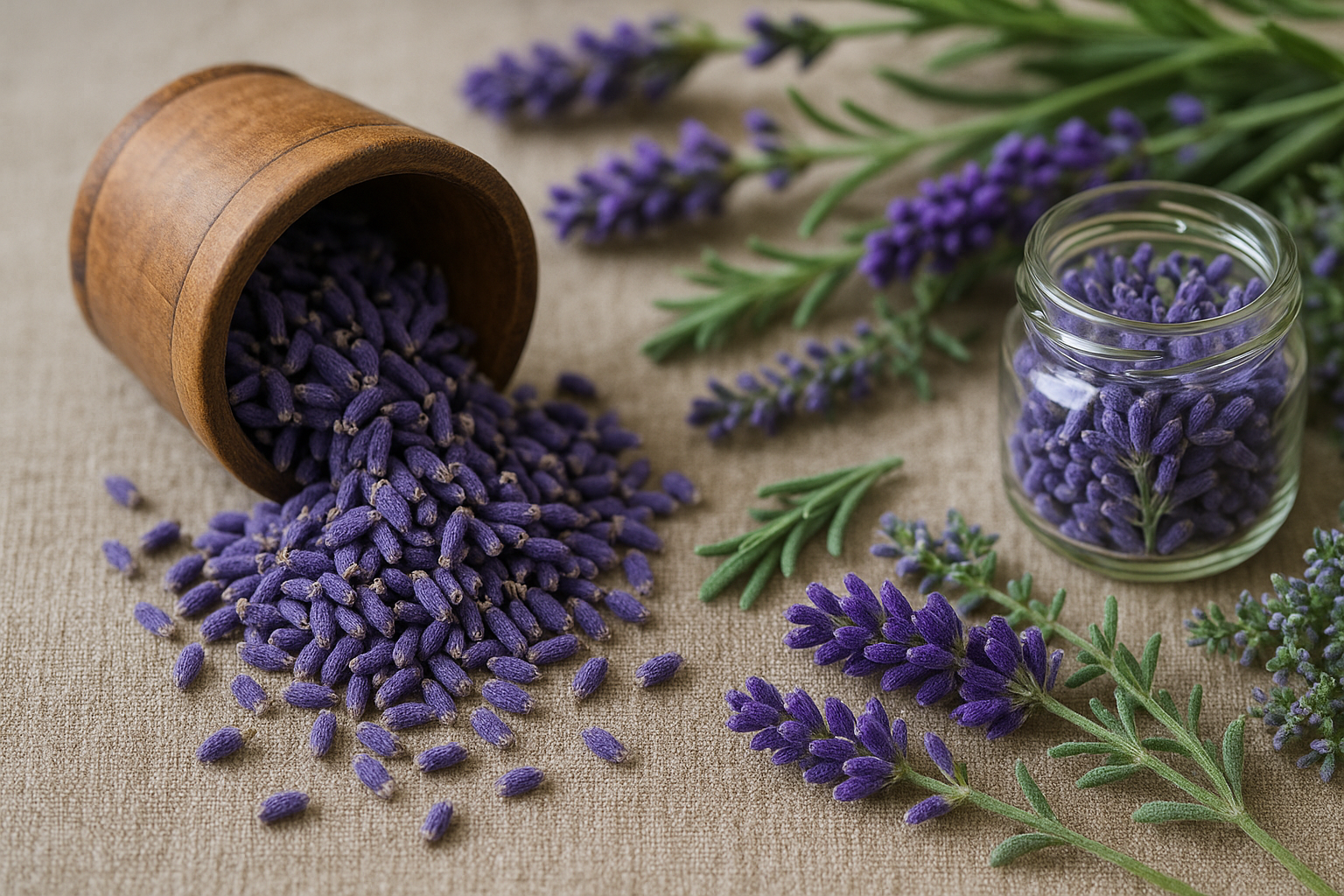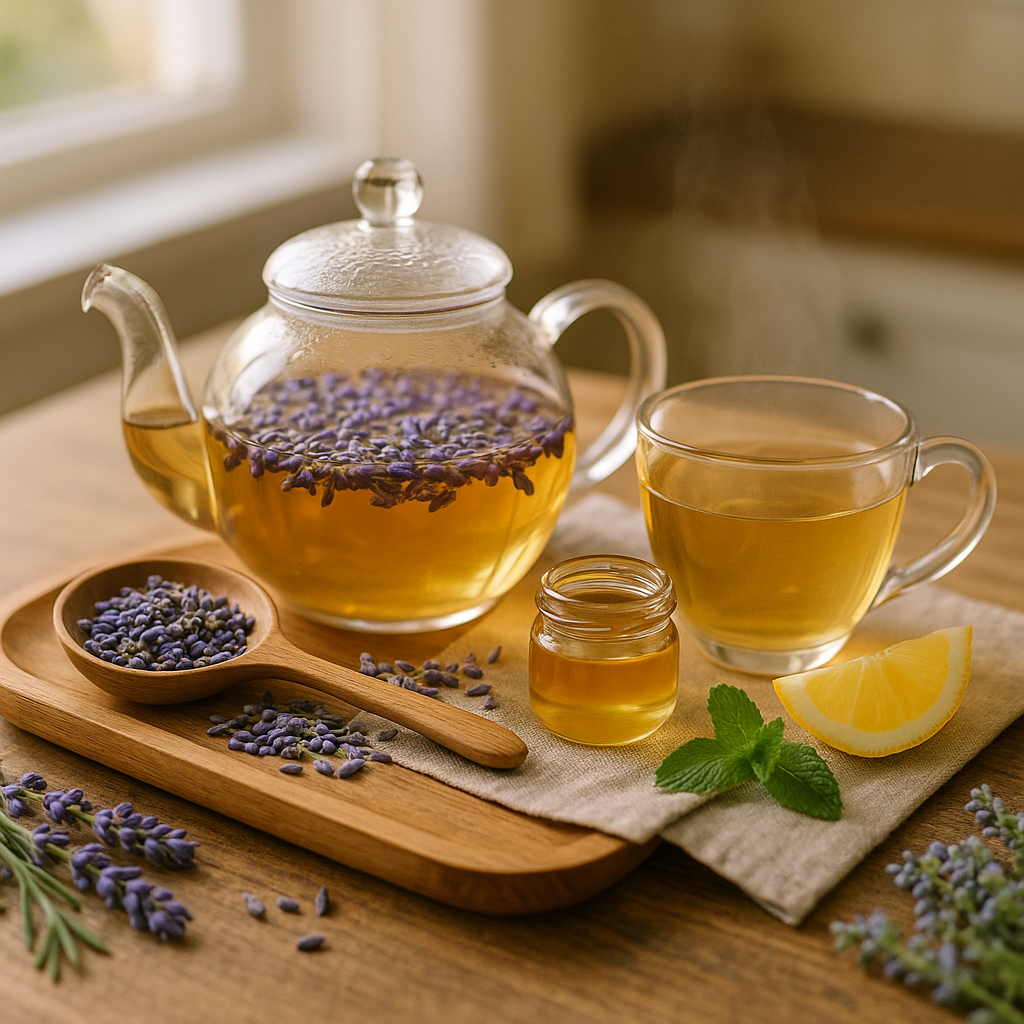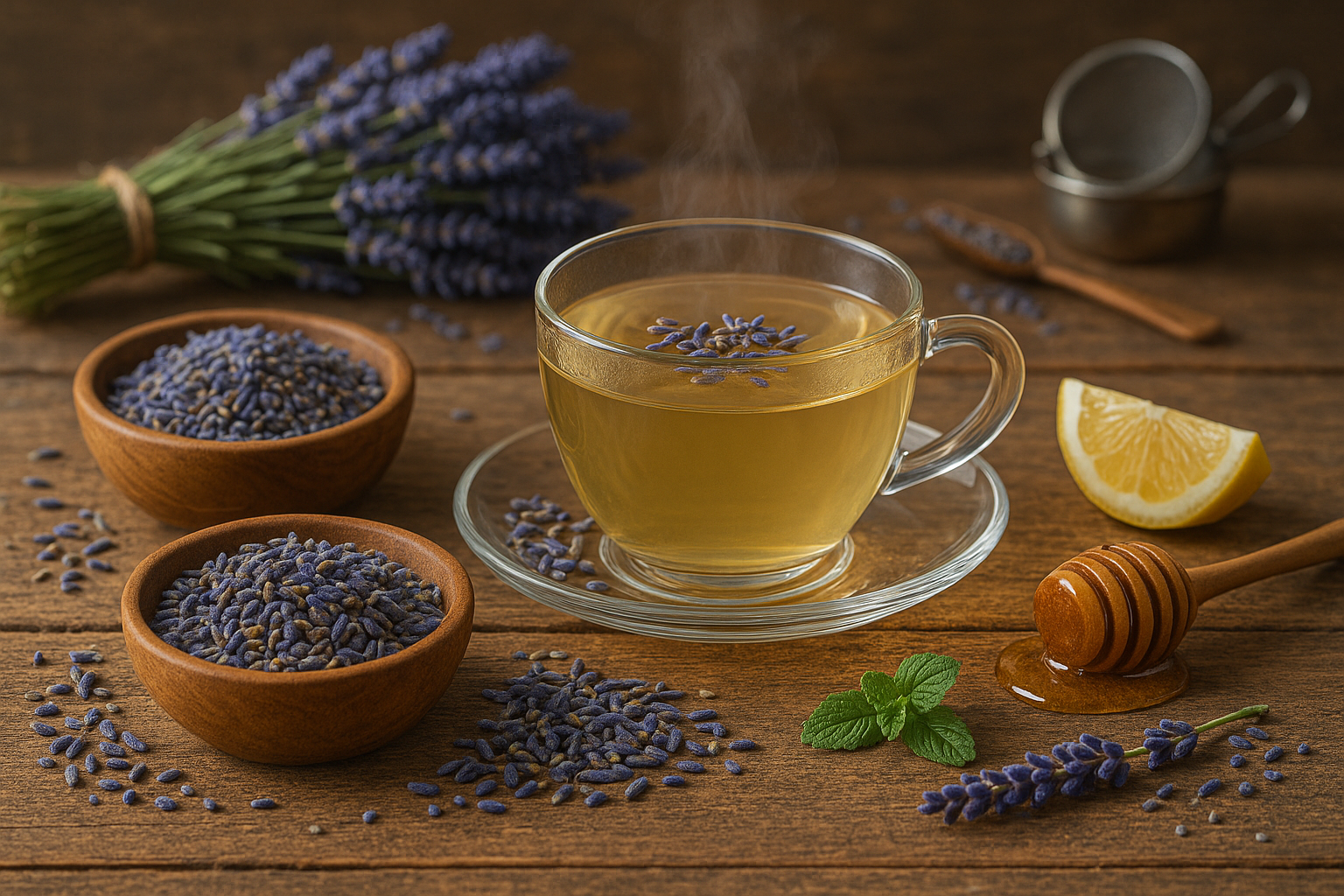Introduction to Lavender Tea
Lavender tea benefits are gaining attention as more people turn to herbal remedies for relaxation and wellness. Made by steeping dried lavender buds in hot water, lavender tea offers a soothing, floral flavor that feels like a gentle hug for your senses. Its striking aroma and calming effects make it a favorite among those who want to destress after a long day or have trouble falling asleep.
You might spot lavender tea featured in cozy cafes or holistic wellness shops, praised for its reputed ability to support relaxation, reduce anxiety, and promote better sleep. Even individuals new to herbal teas are discovering how a simple cup can provide a moment of tranquility during a busy afternoon.
In this article, we’ll explore the most compelling lavender tea benefits, backed by science and tradition, and guide you through simple brewing methods you can try at home. Whether you’re curious about natural ways to unwind or hoping to add a new flavor to your tea collection, you’ll find easy tips and practical insights here to make lavender tea a delightful part of your self-care routine.
What is Lavender Tea?

Lavender tea is a soothing herbal infusion made by steeping the dried buds of the lavender plant, rather than leaves from the Camellia sinensis plant that give us traditional black or green tea. Because it doesn’t contain any actual tea leaves, lavender tea is naturally caffeine-free, making it a relaxing beverage—especially popular in the evening or before bed.
The most common varieties used for brewing are English lavender (Lavandula angustifolia) and French lavender (Lavandula stoechas), each offering a slightly different character. English lavender is prized for its sweet, floral notes, while French lavender has a more robust, piney taste.
When brewed, lavender tea has a distinctive aroma that’s both floral and lightly herbal, with a taste that’s smooth, slightly sweet, and calming—often described as clean and delicate rather than overpowering.
Throughout history, lavender has been used for its soothing properties in cultures across Europe, the Middle East, and even ancient Rome, where it was valued for its calming effects, flavor, and ability to promote relaxation.
Today, lavender tea is enjoyed not just for its calming flavor, but also for its potential wellness benefits, such as supporting sleep and reducing stress. For the freshest experience, try making your own by steeping a spoonful of dried lavender buds in hot water for about five minutes—just be sure to use culinary-grade lavender to avoid bitterness or any unwanted additives.
Key Health Benefits of Lavender Tea
Lavender tea is much more than a soothing drink—it offers a variety of health benefits backed by both tradition and science. One of its most valued effects is relaxation: sipping lavender tea before bed or after a stressful day can help calm your nerves. This is thanks to natural compounds like linalool and linalyl acetate, which interact with neurotransmitters in the brain to promote a sense of calm.
Lavender tea is often recommended as a natural sleep aid for those dealing with insomnia. Many people find that enjoying a cup about an hour before bedtime improves both the quality and duration of their sleep. But the stress-relieving benefits don’t stop there. Lavender also has a gentle mood-enhancing effect, which can help ease symptoms of anxiety or mild depression.
For those who struggle with digestive discomfort, lavender tea offers real relief. It’s known to soothe an upset stomach, reduce bloating, and even ease symptoms of irritable bowel syndrome (IBS). Studies suggest its antispasmodic properties relax the digestive tract muscles, making it a safe, natural choice for occasional tummy troubles.
Regularly drinking lavender tea may also help manage headaches—especially tension headaches—by reducing muscle tension and lessening the anxiety that sometimes triggers migraines. Additionally, the anti-inflammatory properties of lavender, driven largely by its natural antioxidants, can support overall wellness by reducing inflammation throughout the body. This may also contribute to healthy, glowing skin.
For practical use, try brewing a cup of lavender tea as part of your evening wind-down routine or sipping it in the afternoon during high-stress moments at work. Just breathing in its fragrant steam is relaxing on its own, offering a mini break from the hustle and bustle of daily life. Whether you’re seeking better sleep, digestive comfort, or a peaceful mindset, lavender tea is a gentle, flavorful way to support your overall well-being.
Possible Side Effects and Precautions
While lavender tea is generally considered safe for most people, it’s important to be aware of potential side effects and take necessary precautions before adding it to your routine. Some individuals may experience mild allergic reactions such as headaches, nausea, or skin irritation—especially if they are sensitive to plants in the mint family.
Lavender can also interact with certain medications, particularly sedatives, anti-anxiety drugs, and antidepressants, which may lead to increased drowsiness or other unwanted effects. Pregnant or breastfeeding women should avoid lavender tea unless approved by their healthcare provider, as some studies suggest it might influence hormone levels.
Similarly, young children may be more sensitive and should not consume lavender tea without medical guidance. If you are scheduled for surgery or have hormone-sensitive conditions, it’s best to avoid lavender tea due to potential interactions.
To minimize risks, start with a small amount and always consult your doctor or pharmacist if you’re taking prescription drugs, have chronic health issues, or are considering long-term use. Moderation is key—enjoy lavender tea occasionally rather than daily to reduce the chance of side effects and ensure it remains a safe, relaxing part of your wellness routine.
How to Brew Lavender Tea at Home

Brewing lavender tea at home is a relaxing ritual that transforms simple ingredients into a soothing beverage. Start by bringing your water to a gentle boil, aiming for around 200°F (just before a rolling boil).
If you’re using dried loose lavender blossoms, measure about 1 to 2 teaspoons per cup and add them to a tea infuser or a teapot. For lavender tea bags, simply place a bag in your cup.
Pour the hot water over the blossoms or tea bag and let it steep for 5–7 minutes, depending on how strong you like the flavor; longer steeping will create a more pronounced floral note. Once done, strain out the blossoms if you used loose lavender.
To enhance the naturally calming flavor, try adding:
- a drizzle of honey for sweetness,
- a squeeze of fresh lemon for brightness,
- or even a sprig of mint for extra freshness.
Some tea lovers enjoy blending lavender with chamomile, aiming for a half-and-half mix to double down on relaxation and smooth out the floral flavor.
Serve your lavender tea hot for a cozy, comforting experience, or pour it over ice for a refreshing twist—perfect for warm afternoons. Don’t forget to garnish with a lemon wedge or a few lavender buds for a lovely presentation.
With these simple steps and enhancements, you’ll have a cup of aromatic lavender tea that’s both delicious and easy to make, ready to help you unwind any time of day.
Final Thoughts
Lavender tea is a wonderfully soothing herbal beverage that offers benefits like stress relief, better sleep, and gentle support for digestion. One of its best features is how easy it is to make—simply steep dried lavender buds in hot water for a few minutes, strain, and enjoy. Many people love winding down with a warm cup in the evening, savoring its floral aroma and calming effects.
However, it’s important to enjoy lavender tea mindfully. Since herbal remedies can affect individuals differently, start with small amounts to see how your body responds—especially if you have allergies, take medications, or are pregnant. If you have any ongoing health conditions or concerns, always check with a healthcare professional before making lavender tea a regular part of your routine. This simple step ensures you reap the tea’s benefits while avoiding any unexpected side effects.
By preparing and sipping mindfully, you can make lavender tea a peaceful, healthful ritual in your day.
